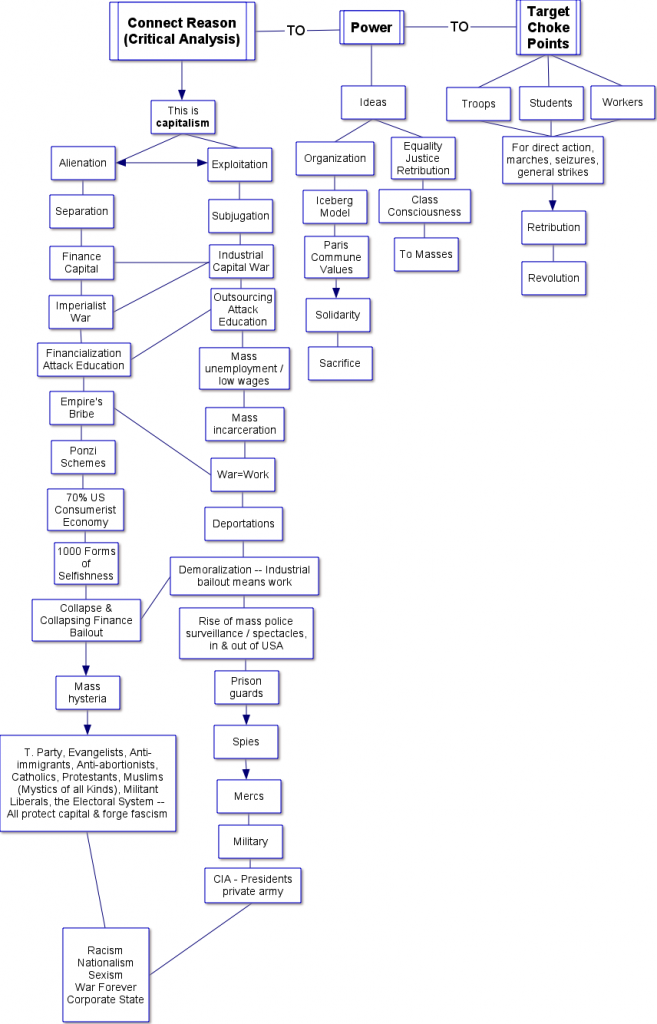AHA Convention (Chicago, January 5-8)
Historians Against the War will have a literature table (shared with the Radical History Review) from 11:30 to 2:30 on Friday on Level 2 of the Sheraton Chicago (the headquarters hotel). The table will be in the common area of Level 2, called the LB Promenade.
Also on Friday, a special session on the jobs crisis, chaired by the AHA president and with Jesse Lemisch as one of the speakers, has been called for 1:00 to 2:30 in Chicago Ballroom VI, also in the Sheraton Chicago.
Among other sessions of interest is one on “Cold War Policing and the American Empire,” chaired by Alfred McCoy, 2:30 – 4:30 Friday in Chicago Ballroom A of the Chicago Marriott Downtown. The on-line program for the convention is at http://aha.confex.com/aha/2012/webprogram/start.html.
Links to Recent Articles of Interest
“Iran and Historical Forgetting”
http://www.counterpunch.org/2012/01/03/iran-and-historical-forgetting
By John Grant, CounterPunch.org, posted January 3
“Debacle: How Two Wars in the Greater Middle East Revealed the Weakness of the Global Superpower”
http://www.tomdispatch.com/post/175484
By Tom Engelhardt, TomDispatch.com, posted January 3
“Will His New Sanctions on Iran Cost Obama the Presidency?”
http://www.juancole.com/2012/01/will-his-new-sanctions-on-iran-cost-obama-the-presidency.html
By Juan Cole, Informed Comment blog, posted January 3
The author teaches history at the University of Michigan
“Iraq: Remembering Those Responsible”
http://www.truth-out.org/iraq-remember-those-responsible/1325433300
By Stephen Zunes, TruthOut.org, posted January 1
“The United States as a Global Power: New World Disorder”
http://www.guardian.co.uk/commentisfree/2011/dec/28/us-global-power-new-world-disorder
Editorial in The Guardian, posted December 29
“Korea and the US Policy of Perpetual War”
http://theragblog.blogspot.com/2011/12/harry-targ-korea-and-us-policy-of.html
By Harry Targ, The Rag Blog Digest, posted December 29
“Q&A: Have Human Rights Been Left Behind in Egypt? On Condition of Anonymity, Representatives of Human Rights Organisations Talk about the Current Situation in Egypt”
http://www.aljazeera.com/indepth/opinion/2011/12/20111213115244470203.html
By Mark LeVine, Aljazeers, posted December 29
The author teaches history at the University of California, Irvine
“Prospects for Peace on Earth”
http://warisacrime.org/content/prospects-peace-earth
By David Swanson, War Is a Crime.org, posted December 22
“David Montgomery, Grand Master Workman”
http://www.thenation.com/article/165235/david-montgomery-grand-master-workman?rel=emailNation
By Dana Frank, The Nation, posted December 19
The author teaches history at the University of California, Santa Cruz
“Iraq: No Comfort in Being Right”
http://original.antiwar.com/vlahos/2011/12/12/iraq-no-comfort-in-being-right/
By Kelly B. Vlahos, antiwar.com, posted December 12
Retrospective analysis of the Iraq occupation



